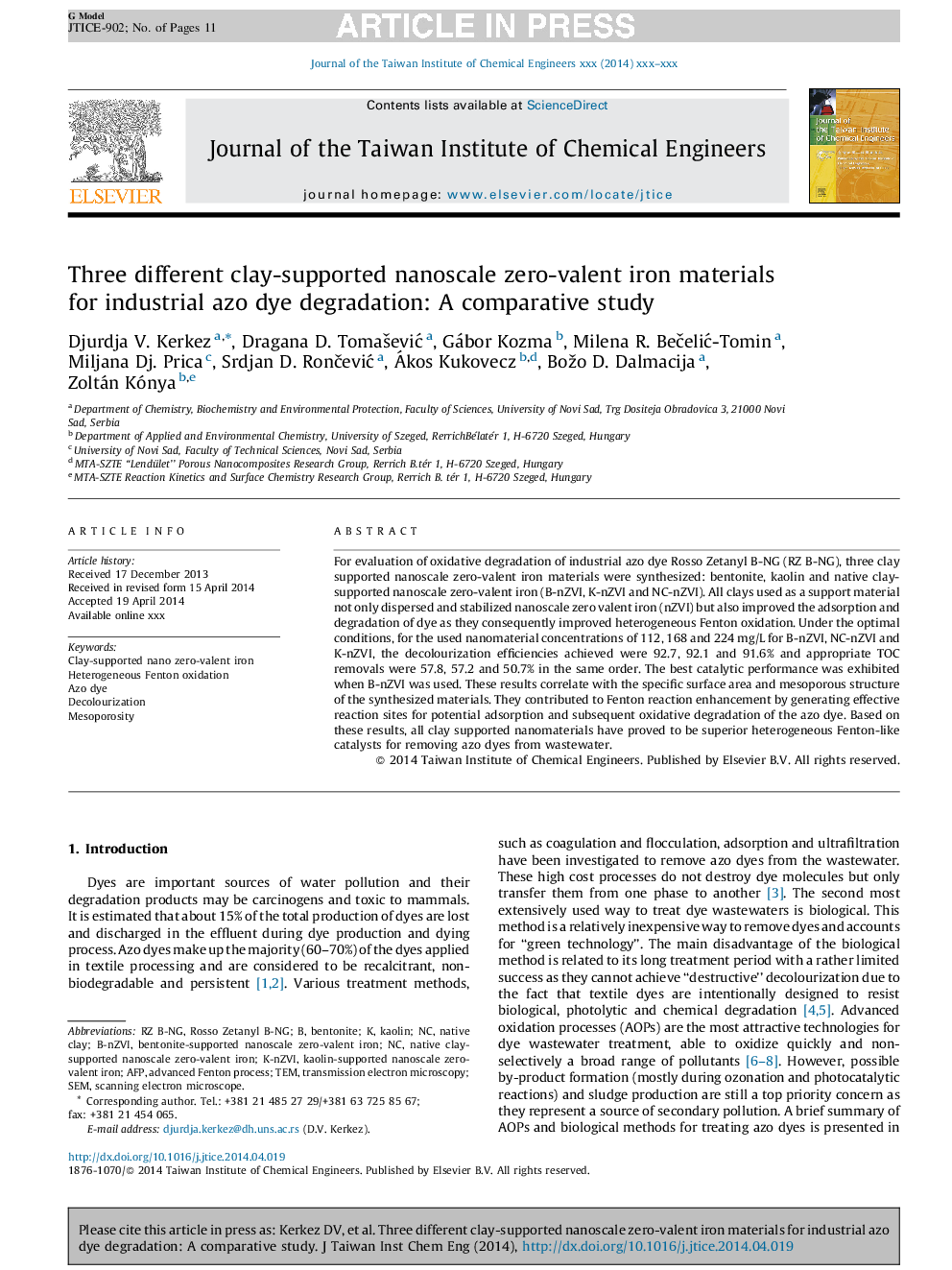| Article ID | Journal | Published Year | Pages | File Type |
|---|---|---|---|---|
| 691509 | Journal of the Taiwan Institute of Chemical Engineers | 2014 | 11 Pages |
Abstract
For evaluation of oxidative degradation of industrial azo dye Rosso Zetanyl B-NG (RZ B-NG), three clay supported nanoscale zero-valent iron materials were synthesized: bentonite, kaolin and native clay-supported nanoscale zero-valent iron (B-nZVI, K-nZVI and NC-nZVI). All clays used as a support material not only dispersed and stabilized nanoscale zero valent iron (nZVI) but also improved the adsorption and degradation of dye as they consequently improved heterogeneous Fenton oxidation. Under the optimal conditions, for the used nanomaterial concentrations of 112, 168 and 224Â mg/L for B-nZVI, NC-nZVI and K-nZVI, the decolourization efficiencies achieved were 92.7, 92.1 and 91.6% and appropriate TOC removals were 57.8, 57.2 and 50.7% in the same order. The best catalytic performance was exhibited when B-nZVI was used. These results correlate with the specific surface area and mesoporous structure of the synthesized materials. They contributed to Fenton reaction enhancement by generating effective reaction sites for potential adsorption and subsequent oxidative degradation of the azo dye. Based on these results, all clay supported nanomaterials have proved to be superior heterogeneous Fenton-like catalysts for removing azo dyes from wastewater.
Keywords
Related Topics
Physical Sciences and Engineering
Chemical Engineering
Process Chemistry and Technology
Authors
Djurdja V. Kerkez, Dragana D. TomaÅ¡eviÄ, Gábor Kozma, Milena R. BeÄeliÄ-Tomin, Miljana Dj. Prica, Srdjan D. RonÄeviÄ, Ákos Kukovecz, Božo D. Dalmacija, Zoltán Kónya,
